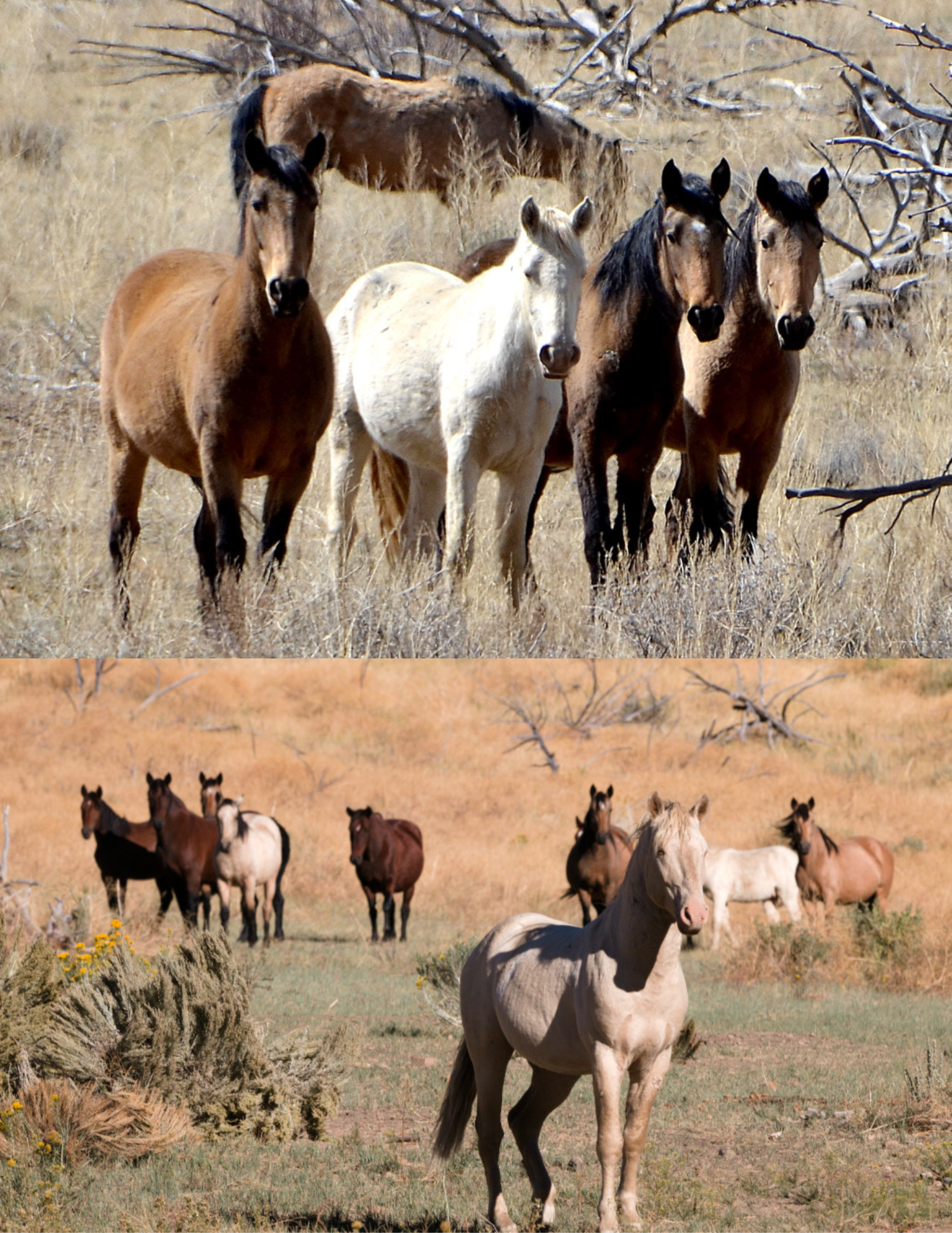July 6 2024. Before you buy a horse consider adopting a Mesa Verde Mustang.
The National Mustang Association Colorado is working with Mesa Verde National Park to adopt the Mustangs living at the National Park because the U.S. thinks they are ENTITLED to kill them even though NMACO research indicates that horses have roamed Mesa Verde for at least a couple of hundred years, long before it was a national park. Presently at least nine small bands of wild horses live in four or more canyons and on three or more mesas in the park. Water sources are rare, becoming nonexistent with the years of drought.
People had inhabited the green mesa top since 7500 BC, archaic people, basket makers, then Ancestral Puebloans building rock shelters in 750 AD. By 1300 AD, the nomadic family groups of the Ute tribes migrated from the Great Basin into the Four Corners region. With the explorations of the Spanish beginning in 1604 from Santa Fe, New Mexico, and north into Colorado, the Utes acquired the horse and the mobility to hunt, raid, and migrate.
The Ute Mountain Ute Tribe claims they have had horses long before the 17th century – probably from the Columbus time, 15th century.
By 1776, Ute tribes had a highly developed tradition of horse use. The Ute people became the People of the Horse. Horses escaped and proliferated in the land. The Old Spanish Trail, a trade route between Santa Fe and California, used by pack trains in the late 1820s, provided new opportunities for trading, looting, immigrants, and escaping horses.
By the 1870s, gold was discovered in the southwest mountains of Colorado, and the Brunot Treaty of 1873 was negotiated which resulted in the ceding of the San Juan and La Plata Mountains by the Ute to the U.S. government and the Ute reservation was restricted to a strip along the southwest borders of Colorado, including Mesa Verde country. But Mesa Verde, the green table, had no rivers, no streams. It is high desert, dry plains dissected by canyons that make the topography look like crocodile skin from above. The people, the wildlife, the free ranging horses were dependent on springs or seeps or on the ability to travel steep sandstone canyon trails to reach water far below and miles away.
Mesa Verde was established as a national park in 1906, but the deceptive land grab from the Ute tribes in Colorado failed to include the most spectacular of the Ancient Puebloan cliff dwellings. The Assistant Commissioner of Indian Affairs and the Inspector with the Department of Interior negotiated a land exchange with the Weminuche Utes that was signed May 10, 1911, expanding Mesa Verde National Park about 3.75 miles southward, that addition surrounded by the Ute reservation. No one told the horses ranging across the park along with the elk and deer.
Today Wild horses are prohibited in the National Park.
According to the park service, horses are not considered indigenous wildlife and federal law does not allow livestock in the park. In addition, the horses at Mesa Verde do not fall under the protection of the Wild horse Free-Roaming Horse and Burro Act. That law identifies specific public lands in the West where wild horses are managed long term under the Bureau of Land Management (BLM). Mesa Verde is not included.
In October 2013, the park’s wildlife biologist stated that, instead of developing a management plan for the horses, the park would “use fencing to keep horses away from water sources.” The Denver Post reported that this would “serve as a sort of management tool: Lack of water will force the horses to go elsewhere, and when horses are under stress from too little food or water, they are less fertile.” In the summer of 2014, at least six horses in the park died from dehydration.
Climate Change and the ongoing drought in the Southwest.
For several years, NMACO negotiated unsuccessfully with the National Park Service at Mesa Verde to manage the horses there with injectable fertility vaccine, but the National Park Service considers the horses incompatible with the antiquities and archaeological sites and plans to remove the horses. With the multi-year drought in the southwest, available springs and seeps are drying up. Much as drought and conflict triggered the migration of the Ancient Puebloans from Mesa Verde, drought has caused a crisis for the wild horses of Mesa Verde. The Park has agreed to allow habituation, bait trapping, and eventual low stress removal of the horses. NMACO will have title and possession of the horses for their training and further adoption".
In our view YOUR HELP IS NEEDED. Contact the National Mustang Association Colorado by email at info@nmaco.org or donate on their website.
Information for this story found on the National Mustang Association Colorado website.

